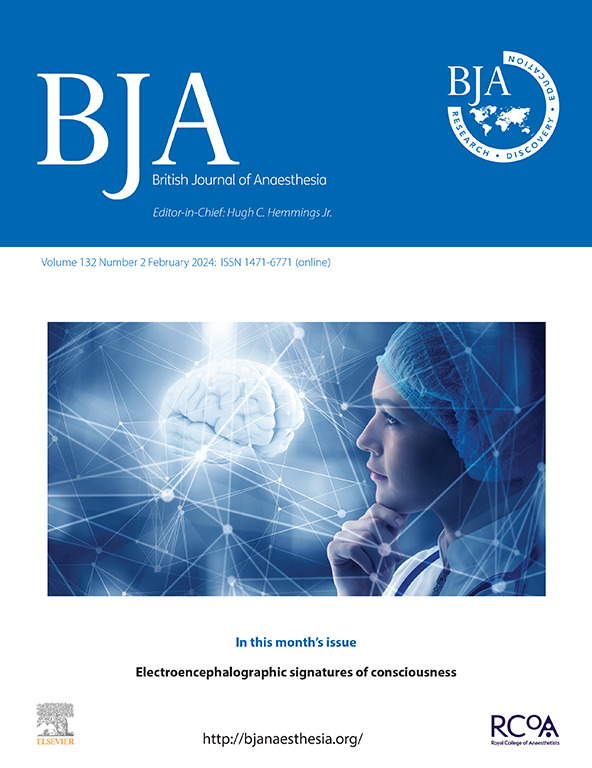Connectome harmonic decomposition tracks the presence of disconnected consciousness during ketamine-induced unresponsiveness
IF 9.1
1区 医学
Q1 ANESTHESIOLOGY
引用次数: 0
Abstract
Background
Ketamine, in doses suitable to induce anaesthesia in humans, gives rise to a unique state of unresponsiveness accompanied by vivid experiences and sensations, making it possible to disentangle the correlated but distinct concepts of conscious awareness and behavioural responsiveness. This distinction is often overlooked in the study of consciousness.
Methods
The mathematical framework of connectome harmonic decomposition (CHD) was used to view functional magnetic resonance imaging (fMRI) signals during ketamine-induced unresponsiveness as distributed patterns across spatial scales. The connectome harmonic signature of this particular state was mapped onto signatures of other states of consciousness for comparison.
Results
An increased prevalence of fine-grained connectome harmonics was found in fMRI signals obtained during ketamine-induced unresponsiveness, indicating higher granularity. After statistical assessment, the ketamine sedation harmonic signature showed alignment with signatures of LSD-induced (fixed effect =0.0113 [0.0099, 0.0127], P<0.001) or ketamine-induced (fixed effect =0.0087 [0.0071, 0.0103], P<0.001) psychedelic states, and misalignment with signatures seen in unconscious individuals owing to propofol sedation (fixed effect =–0.0213 [–0.0245, –0.0181], P<0.001) or brain injury (fixed effect =–0.0205 [–0.0234, –0.0178], P<0.001).
Conclusions
The CHD framework, which only requires resting-state fMRI data and can be applied retrospectively, has the ability to track alterations in conscious awareness in the absence of behavioural responsiveness on a group level. This is possible because of ketamine's unique property of decoupling these two facets, and is important for consciousness and anaesthesia research.
求助全文
约1分钟内获得全文
求助全文
来源期刊
CiteScore
13.50
自引率
7.10%
发文量
488
审稿时长
27 days
期刊介绍:
The British Journal of Anaesthesia (BJA) is a prestigious publication that covers a wide range of topics in anaesthesia, critical care medicine, pain medicine, and perioperative medicine. It aims to disseminate high-impact original research, spanning fundamental, translational, and clinical sciences, as well as clinical practice, technology, education, and training. Additionally, the journal features review articles, notable case reports, correspondence, and special articles that appeal to a broader audience.
The BJA is proudly associated with The Royal College of Anaesthetists, The College of Anaesthesiologists of Ireland, and The Hong Kong College of Anaesthesiologists. This partnership provides members of these esteemed institutions with access to not only the BJA but also its sister publication, BJA Education. It is essential to note that both journals maintain their editorial independence.
Overall, the BJA offers a diverse and comprehensive platform for anaesthetists, critical care physicians, pain specialists, and perioperative medicine practitioners to contribute and stay updated with the latest advancements in their respective fields.

 求助内容:
求助内容: 应助结果提醒方式:
应助结果提醒方式:


